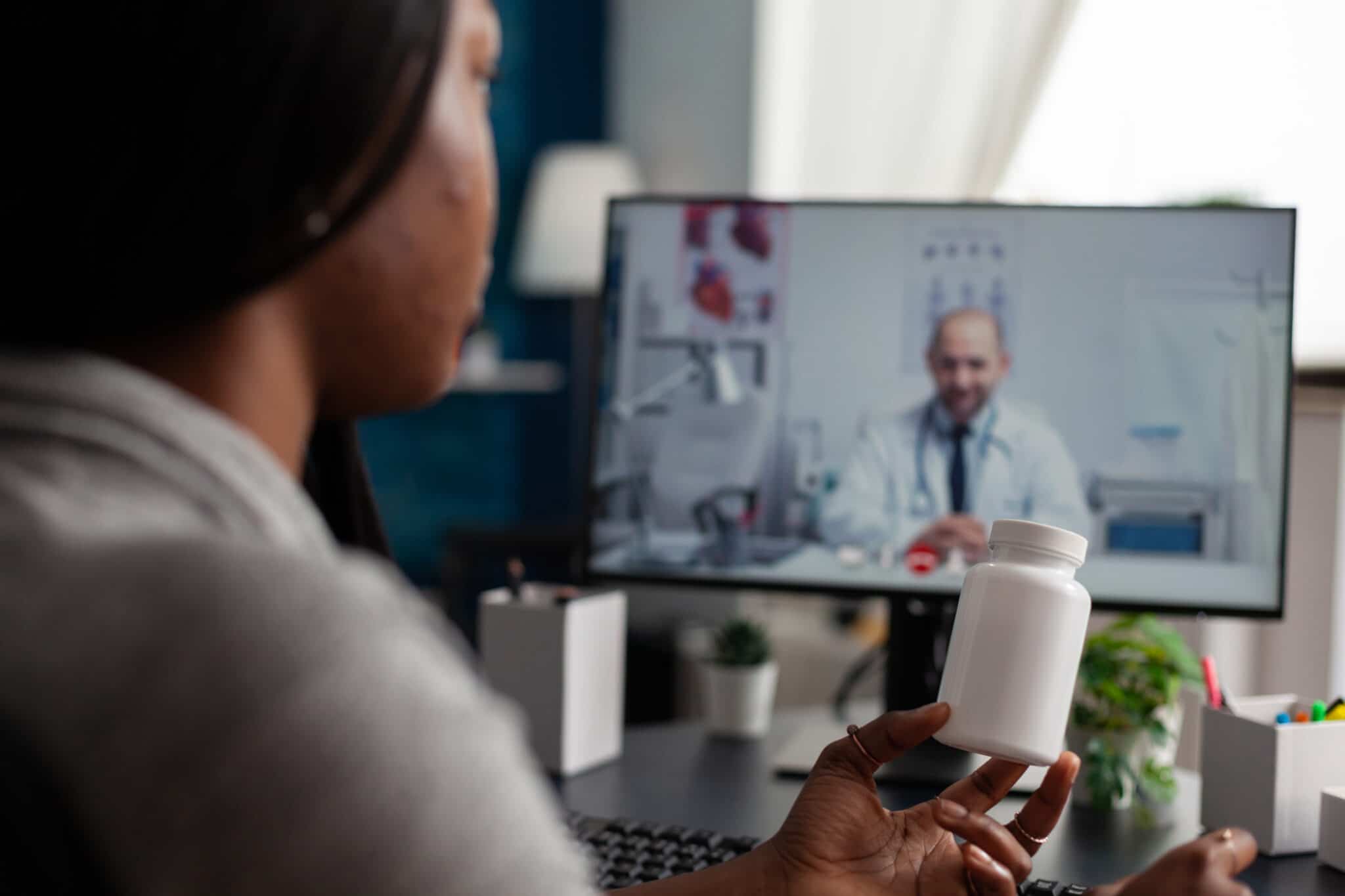Health insurance fraud is a major concern for the industry. With remote health assessments and ‘telehealth’ services coming to the forefront, is there an opportunity for fraudsters to take advantage of new technology?
Between the rise of technology and the ongoing effects of the coronavirus pandemic, remote doctor appointments and telehealth services are growing. In 2019, 1% of global doctor visits were estimated to take place via telehealth options, and Deloitte predicted this would rise to 5% by 2021. The pandemic certainly pushed the growth along, with more than 43% of all US Medicare primary care visits in April of 2020 (the start of the pandemic) taking place via telehealth channels.
In hindsight, it seems that this growth went far beyond the 5% that Deloitte predicted. Figures from the APA (American Psychiatric Association) revealed that, throughout the pandemic:
- 82% of Americans used telehealth services to speak to a medical professional
- 69% of respondents stated that their appointments were in video format
- only 38% said they spoke with a doctor over the phone
With this rise, there’s concern that it will become easier for criminals to commit health insurance fraud. Before we address this, let’s look at exactly what “telehealth” means.
The rise of telehealth services
In countries like Britain where the National Health Service (NHS) provides the lion’s share of peoples’ healthcare, telephone consultations are nothing new. For years, in part to lower demand, the service has offered an initial telephone call between patient and doctor for non-urgent health issues. If the doctor doesn’t feel the issue can be resolved on a call, they will invite the patient to the clinic for face-to-face treatment.
While COVID-19 has increased the use of telehealth services like this across the world, it by no means started the trend. Apps like Babylon Health have been around for several years, offering anyone who registers a free initial assessment through AI, and phone or video consultations with real doctors for a fee.
Vitality Health Insurance also has, for years, offered options for patients to speak online to a doctor in order to avoid visiting their local health clinic. Such services allowed patients to speak to a professional without having to travel or risk exposure to the COVID-19 virus at the height of the pandemic.
Telehealth and health insurance fraud
While the benefits of video and telephone calls between patient and doctor are numerous, there are also drawbacks. Health insurance fraud is on the rise, right along with the trend of telehealth.
The risks of health insurance fraud through telehealth are broad. Perpetrators come in the form of organized crime leaders, doctors, and patients, with insurers being the main victim.
According to Reuters, throughout the US, scams have taken place in which Medicare beneficiaries are targeted with treatment scams. Doctors and telehealth companies have been bribed to approve the claims.
Schemes such as these have resulted in significant loss to American taxpayers using Medicare, and have seen false claims in some cases worth more than USD 400 million. One particular health insurance fraud case taken down by the US Department of Justice saw the indictment of 86 people citing USD 4.5 billion in telehealth fraud.
In addition to fraudulent business operations taking advantage of patients, there has also been a rise in patients pretending to be someone else in order to gain treatment via telehealth services. Unfortunately, most telehealth services don’t have a strict process for patient ID verification.
The problem with ID in health insurance fraud
This makes it very easy for health insurance fraud in assuming the identity of another person in order to receive treatment. ID is fairly easy to fake in this day and age, and unfortunately, it can be difficult to verify an ID card via video, even with HD webcams, when you lack the necessary tools.
While health insurance fraud is nothing new (nor is telehealth fraud, for that matter) and was occurring well before the pandemic, it’s important to emphasize that the pandemic has increased the opportunity for health insurance fraud to occur.
Perhaps the greatest tragedy within all of this is that the end result leaves honest patients footing the bill for health insurance fraud scams. One result of telehealth fraud can be an increase in uncovered drugs and denied claims. Not to mention, higher premiums as insurers look to recoup their losses and implement new safeguards.
How to stop digital health insurance fraud
Governments are working hard to catch telehealth scammers. They continue to be diligent and have taken down some large operations, such as the aforementioned USD 4.5 billion scam. While government regulations, such as HIPAA are already in place, working to support the healthcare sector, there is still much to be done to help prevent the snowballing effect of fraudulent schemes that are made easier because of telehealth.
Every medical facility, doctor, and insurance company needs to embrace stricter checks to protect themselves from individuals posing as others in order to take advantage. They also need to introduce robust solutions to protect their patients and doctors.
Telehealth fraud can be committed by individuals or organizations, and made possible by doctors. It’s up to each government and health service to find a way to protect businesses affected by fraud.
Improved identity verification is the only way to prevent health insurance fraud through telehealth. The right insurtech makes these types of solutions possible with AI KYC services, facial recognition, and OCR tools.
To discover more ways to digitize and enhance your health insurance offering, book a demo with us today.

FintechOS FintechOS is the global leader in fintech enablement, on a mission to make fintech innovation available to every company. As the world grows increasingly complex, FintechOS strives to simplify and accelerate financial technology so anyone can build, launch, service, and expand new products in weeks, not months or years. The FintechOS platform empowers banks, credit unions, and insurers of any size to grow revenue, lower operating costs, and achieve a faster time to value without dependency on core infrastructure and costly tech talent. Headquartered in New York and London, FintechOS has partnered with some of the world’s best brands, including Groupe Société Générale, Admiral Group, Oney, eMag, Deloitte, EY, and PWC.






